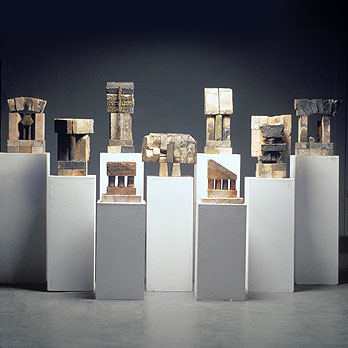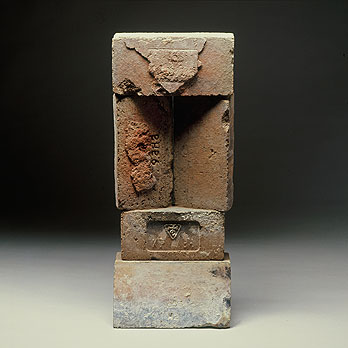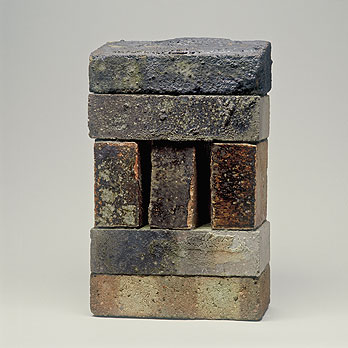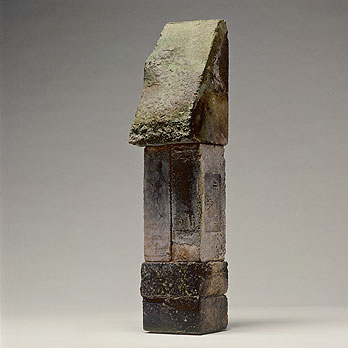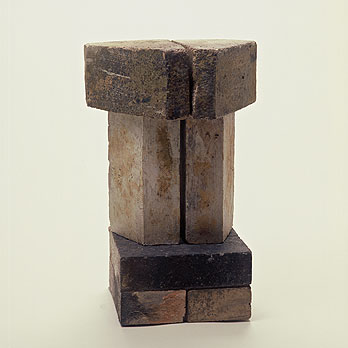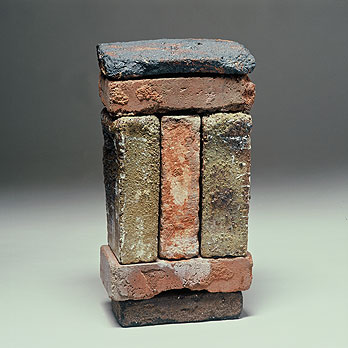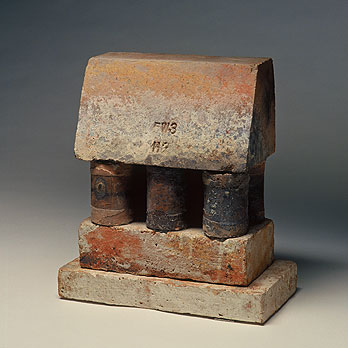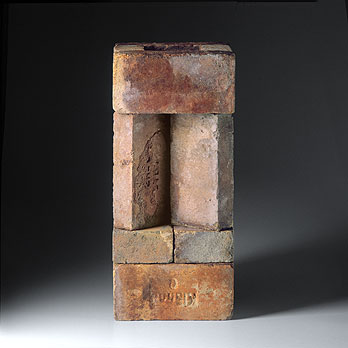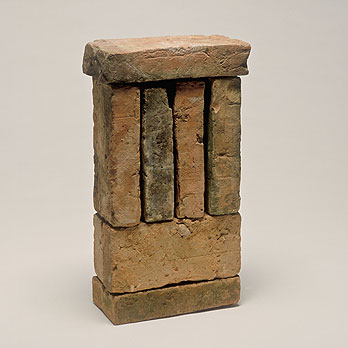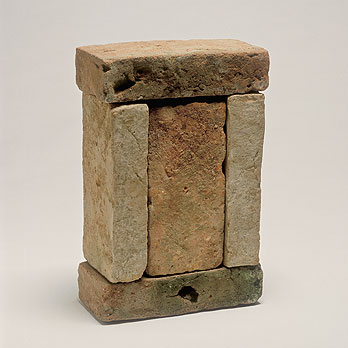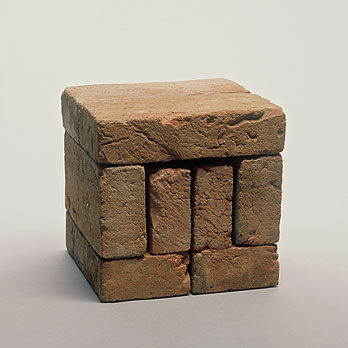Johannes Gebhardt
About the brick sculptures
of Johannes Gebhardt
Estimeed in the national and international expert world, Johannes Gebhardt's work and teaching activity is given an honourable mention. Gebhardt defines himself as a ceramic artist and basing on this fundamental experience all his works have been created and passed many stages of artistic development: vessels and free works that leave the closer field of ceramic art and enter areas of fine arts.
Since the eighties', those objects have been created that he calls "Sculpture Collages" pointing out that they are not made of one, but of several pieces that were only connected with one another by reasons of an increased structural calculation. In the original meaning of the word, they are firebricks from which these simple structures have been created. And their instability is their particular appeal. In 1990, Gebhardt himself remarks in a text for an exhibition catalogue: "The formal basic order of my sculpture collages bases on standard forms -and masses of standard bricks as they are used in the field of furnace construction. I partly broke the material, whose colour and surface had been formed by lonlasting impact of fume and fire, out of an ruinous brick-kiln, partly it comes from demolition of an old potter's kiln. This material has been lying for years in the garden behind my house and the colours of the volcanic processes are added by colours and textures of organic reserve transformation which had taken place within the years and in the change of the seasons of the year. I have joined the pieces as I have found them: to pieces of architectures, to figurations. I associate with them occurrences, the dimension of time which finally subordinates everything that has been created by human hand and ratio".
Using forms reduced to the utmost, Gebhardt joins his objects in such a way that a vast range of variety is created. Head, temple or shrine are such structures that can come together to a larger ensemble which Gebhardt calls "Temple Garden". Associations to ancient cultures become clear, reminiscents of primeval moments. The artist had conceived them on his far voyages and developed them in his phantasy. He often uses different materials, combines iron with stone. Found material becomes the basic material of the created things. And every time a mysterious creation is produced that immediately appeals and motivates the observer to develop own feelings. Though far from pituresque effects and a beautiful appearance, nevertheless, the artist does not renounce colour. However, the tones are silent, broken and determined by the ceramic material like the sculptures themselves that in spite of the same dimensions of the basic material by slight shiftings, sloping positions or suggested arches receive a silent liveliness and variety. In such a way works are created that only seem to be similar. In reality they are highly differentiated.
Gerhard Gerkens
